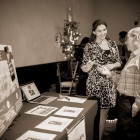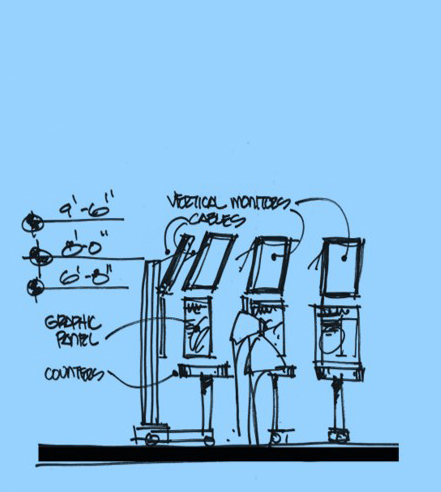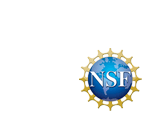
The Art of Science Learning (AOSL) is a National Science Foundation-funded initiative exploring innovation at the intersection of art, science and learning by using the arts to spark creativity in STEM education and foster the development of an innovative 21st Century STEM workforce. Our current project, funded by NSF grant DRL-1224111 (“Integrating Informal STEM and Arts-Based Learning to Foster Innovation”), has developed a new curriculum using the arts to teach innovation processes to adolescent and adult learners; implemented the curriculum in year-long arts-based Incubators for STEM Innovation; and studied arts-based learning’s impact on creative thinking skills, collaborative behaviors and innovation outcomes.
Curriculum and Incubators
The AOSL curriculum uses the arts to teach skills and practice steps common to most innovation processes, integrated with tools and best practices drawn from the Product Development Management Association Body of Knowledge and Lean Start-Up methodologies, developed in collaboration with some of the world’s leading experts in arts-based learning and innovation. In partnership with San Diego’s Balboa Park Cultural Partnership, Chicago’s Museum of Science and Industry and EcoTarium in Worcester, we also established Incubators for Innovation in those institutions, to serve as test sites for the new curriculum.
Between October 2013 – January 2015, the incubators brought together 305 STEM professionals, formal and informal educators, artists, business leaders, researchers, policymakers and students to create, develop innovations in response to STEM-based civic challenges – water resources in San Diego, urban nutrition in Chicago and transportation alternatives in Worcester. Art of Science Learning faculty led more than 60 workshops, using the arts to help incubator participants (known as Art of Science Learning Fellows) learn and practice new ways to explore challenges, identify problems and opportunities; generate, transform and communicate creative ideas; collaborate on cross disciplinary innovation teams; and co-create solutions with external partners. We used “Metaphorming” (a collaborative symbolic modeling process created by Dr. Todd Siler, our ArtScientist in Residence) to give Fellows the opportunity to embody, enrich and communicate their aspirations as they launched their innovation journeys, and to envision next steps at the completion of the program. Open-ended jazz improvisation helped Fellows learn new observational techniques and practice “suspending disbelief.” The Fellows used Surrealist visual and spoken word techniques to stimulate the flow of intuitive insights in their ideation, and clay sculpture as a medium for modeling their ideas and assessing how they “stood up”.
After several months of work, the Fellows chose problems and solutions and formed themselves into 28 cross-disciplinary Art of Science Learning innovation teams in largely self-organized processes. As the teams developed their concepts into innovations, we supported them with ongoing innovation training. Teams spent time with string quartets to observe successful collaborative behaviors in multi-leader environments, practiced user-centric iterative design thinking in community workshops, and worked with a theater-based technique called Rehearsing Ideas to accelerate their prototyping cycles. We also provided mentors, access to knowledge resources and community partners and modest budgets.
Innovations
22 teams (79% of the original cohort) successfully developed and gone to market with working prototypes or “MVP’s” (Minimally Viable Products) within twelve months:
PRODUCTS
PedSim – A big-data tool to help city planners quantify and predict pedestrian and bicyclist behavior. (Worcester)
Waterdrops – A portable, solar-powered backpack that extracts water from the air by manipulating the dew point. (San Diego)
Foodweb – A virtual network connecting food insecure communities with producers and distributors. (Chicago)
Trash to Paradise – A low-cost treatment plant using repurposed trash and artificial wetlands to transform wastewater into agricultural water. (San Diego)
Smart Healthcare Transit – An app linking medical schedulers, public transport providers and patients to optimize scheduling and improve access. (Worcester)
En Plein Aire – An app with native landscape images and resources, promoting reduced water usage by inspiring and educating homeowners. (San Diego)
Seed Saddle — An in-home urban growing system, designed to straddle windowsills, using a “wicking” mechanism for passive watering. (Chicago)
BeeLite – Solar powered soil moisture sensors to efficiently meet the needs of native gardens. (San Diego)
Sprezza – A multi-modal demand-driven transport network using real-time data to determine routes, hub locations and schedules. (Worcester)
PROCESSES AND SERVICES
Tasks for Transit – A sharing economy system converting volunteer hours into bus passes for those in need. (Worcester)
Crunch Time: Teen Cuisine – A healthy cooking web show featuring short videos created and produced by teens, supported by Chicago’s video production community. (Chicago)
Secret City Interactive – An augmented reality/social media service to encourage neighborhood discovery through walking. (Worcester)
Hacking Hunger: Feeding Our City – A festival generating DIY/DIWO grassroots solutions to food insecurity. (Chicago)
ISE EXPERIENCES
Sculptural Dew Collectors – Biologically-inspired structures that harvest atmospheric water and support learning activities exploring water’s microphysics. (San Diego)
Aqua Wiser – A mobile innovation center/model house and garden featuring interactive educational experiences and fostering community innovation. (San Diego)
Edu-Kitch – A healthy eating pop-up cart, serving as a stage for multi-sensory performances providing nutritional knowledge to young audiences. (Chicago)
Epic Water Game – An educational game that takes players inside the California ecosystem to explore the connection between water and their own lives. (San Diego)
DIY EcoLab – “STEAM in a box” art/science activity kits that blend observation, inquiry and creative expression. (San Diego)
BEIC – Simulation-based community learning for participants who collaboratively develop water neutral architecture, engineering and construction projects. (San Diego)
K-12 STEM CURRICULA
Growing Innovations – An NGSS-aligned middle school curriculum teaching innovative plant growing methods. (Chicago)
STEM Unplugged – An NGSS-aligned middle school curriculum exploring the impact of multi-tasking on transportation safety. (Worcester)
Wires Over the World – An NGSS-aligned high school MOOC coupled with an engineering/design competition for urban aerial transportation systems. (Worcester)
All innovations were certified by external panels of experts in STEM learning, innovation and the various challenge domains as demonstrating novelty, the potential for implementation and the capacity to add value. As of nine months after the incubators closed, 8 teams were still working to advance their innovations.
Research
This project created an important opportunity to learn more about the relationship between the arts, STEM learning and innovation. Studies from the past decade documented the central role of creativity, collaboration and communication skills to the development of an innovative STEM workforce. Educators and employers have started to “connect the dots” – a substantial body of “STEAM” practice has developed and roughly 80% of America’s Fortune 500 companies use arts-based learning to strengthen employee creativity, collaboration and innovation skills. But research into the impact of arts-based learning on STEM education and innovation processes remains limited, leading the team of 90 national researchers who participated in our Phase 1 conferences (funded by NSF grant DRL 0943769, “Arts-Based Learning in Informal Science Education”) to conclude that “there is the need for a series of more sophisticated and developed quantitative studies than have been conducted to date” (Storksdieck, 2011).
Project research has addressed this need by comparing the impacts and outcomes of arts-based innovation training with more traditional innovation training that does not incorporate the arts, through experimental studies testing the hypothesis that integrating the arts into STEM-related innovation training results in enhanced creative thinking skills and more robust innovation processes and outcomes. The research, conducted by Audience Viewpoints Consulting, used a pre-test, post-test intact group design, with a control group. The cohort consisted of 65 high school students from Worcester, and 69 early career STEM professionals from San Diego. Participants were given an arts/science experience and creativity process pre-survey, and were then assigned to control or treatment groups. They also filled out post-tests at the end of the five-week period. On site, participants completed creativity skills tests at the beginning and end of the five-week period. In addition, observers gathered data on the collaborative interactions of teams, an expert panel of judges scored the innovation outputs, and follow-up was done with a subset regarding transferability of skills learned.
The study evidence now available shows that the arts-based innovation training had a significantly stronger positive impact on the individual creativity skills of high school students than the traditional innovation training. Similarly, the expert panel found that teams using the arts-based training created innovations demonstrating significantly greater insight into the challenge and stronger problem solving strategies, and resulted in significantly greater impacts than the innovations created by teams using the traditional innovation training. Significant effects of this nature and strength were not found among the creative thinking skills of the adults or the innovation outputs of their teams. However, the arts-based training had a significantly stronger positive impact on the collaborative behaviors of the adults — including sharing leadership, mutual respect, empathic listening and trust in moving toward a solution — than the traditional innovation training.
Complete research findings in final form will be published later this year.
Next Steps
Next year, we’re touring Innovation at the Intersection, the Art of Science Learning exhibition we’ve developed in partnership with the Rueben H. Fleet Science Center in San Diego. The exhibition, which opens at the Fleet on January 16, will give visitors across the country opportunities use arts-based techniques to innovate solutions to STEM problems, while exploring the 22 unique innovations developed by the incubator teams. In each city, the exhibition will be accompanied by symposia to share the project’s research and evaluation findings, and arts-based innovation workshops, to give professional and community audiences opportunities to experience the AOSL curriculum, while allowing us to continue refining both the curriculum and the creativity skills instrument we developed to measure impact. Finally, we’re developing plans for Art of Science Learning’s Phase 3, which will focus on building scalable arts-based innovation tools and collaborative digital learning resources; implementing them in “real world” STEM innovation processes in a diverse set of partner organizations; and furthering our investigation into nature of, and mechanisms behind, the impacts of arts-based learning.
Harvey Seifter
Art of Science Learning Director and PI
November 1, 2015
New York City

